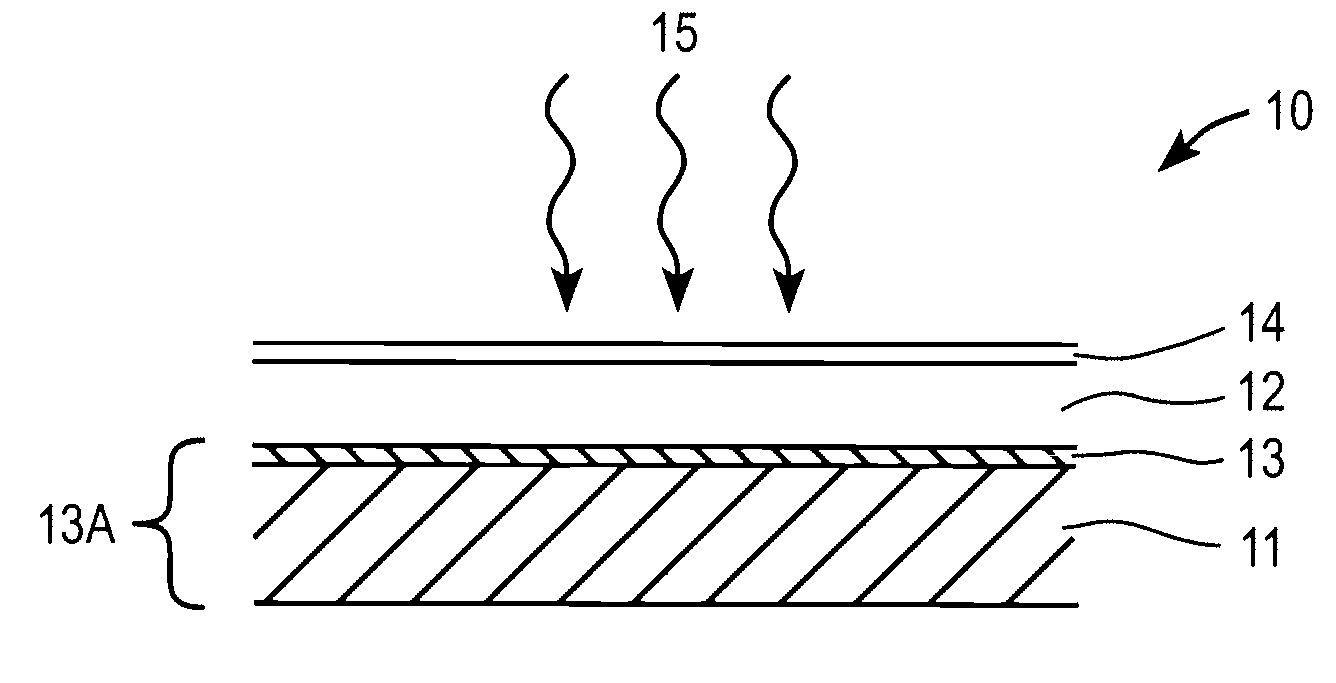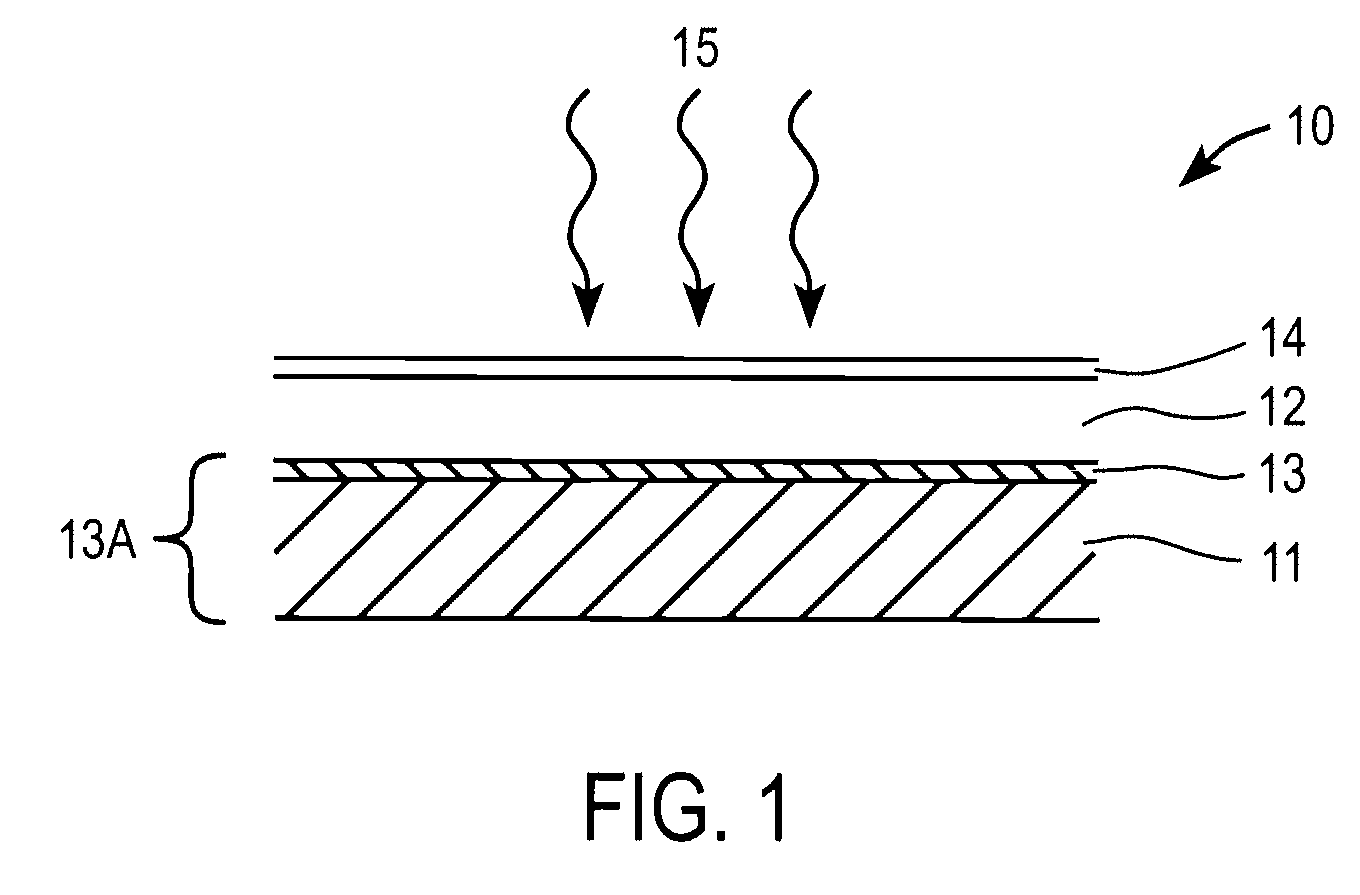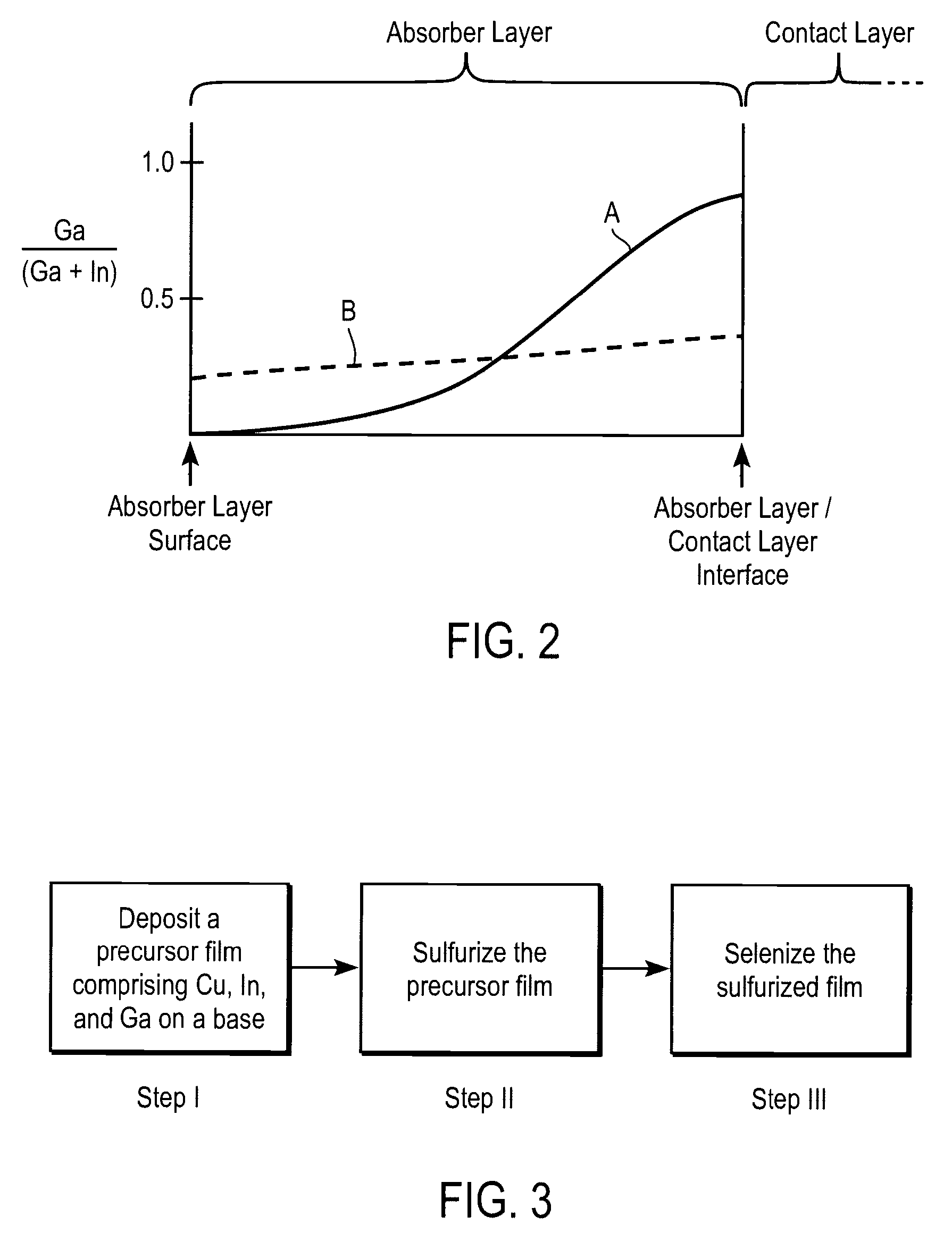Method and apparatus for controlling composition profile of copper indium gallium chalcogenide layers
a composition profile and composition technology, applied in the field of method and apparatus for preparing thin films of semiconductor films, can solve the problems of difficulty in uniform distribution of ga through the thickness of the absorber layer, higher electricity generation cost of silicon-based solar cells than the cost of electricity generated by the more traditional methods, etc., and achieve the effect of increasing the performance of such absorbers and low efficiencies
- Summary
- Abstract
- Description
- Claims
- Application Information
AI Technical Summary
Benefits of technology
Problems solved by technology
Method used
Image
Examples
Embodiment Construction
[0018]FIG. 3 shows the process steps for growing a Cu(In,Ga)Se2 absorber layer on a base, wherein the Ga distribution within the absorber layer is substantially uniform. As can be seen from FIG. 3, the first step of the process (Step I) is deposition of a precursor film on a base, the precursor film preferably including Cu, In and Ga. As an example, the amounts of Cu, In and Ga may be such that Cu / (In+Ga) molar ratio in the film may be in the range of 0.7-1.0, preferably in the range of 0.8-0.9, and the Ga / (Ga+In) molar ratio may be in the range of 0.1-0.5, preferably in the range of 0.2-0.35. The precursor film may be deposited on the base by a variety of techniques such as electrodeposition, evaporation, sputtering, ink deposition etc. The precursor film may include nano particles made of Cu and / or In and / or Ga and / or their mixtures and / or alloys. Alternately, the precursor film may include at least two sub-layers, each sublayer including at least one of Cu, In and Ga.
[0019]Referr...
PUM
| Property | Measurement | Unit |
|---|---|---|
| molar ratio | aaaaa | aaaaa |
| molar ratio | aaaaa | aaaaa |
| molar ratio | aaaaa | aaaaa |
Abstract
Description
Claims
Application Information
 Login to View More
Login to View More - R&D
- Intellectual Property
- Life Sciences
- Materials
- Tech Scout
- Unparalleled Data Quality
- Higher Quality Content
- 60% Fewer Hallucinations
Browse by: Latest US Patents, China's latest patents, Technical Efficacy Thesaurus, Application Domain, Technology Topic, Popular Technical Reports.
© 2025 PatSnap. All rights reserved.Legal|Privacy policy|Modern Slavery Act Transparency Statement|Sitemap|About US| Contact US: help@patsnap.com



